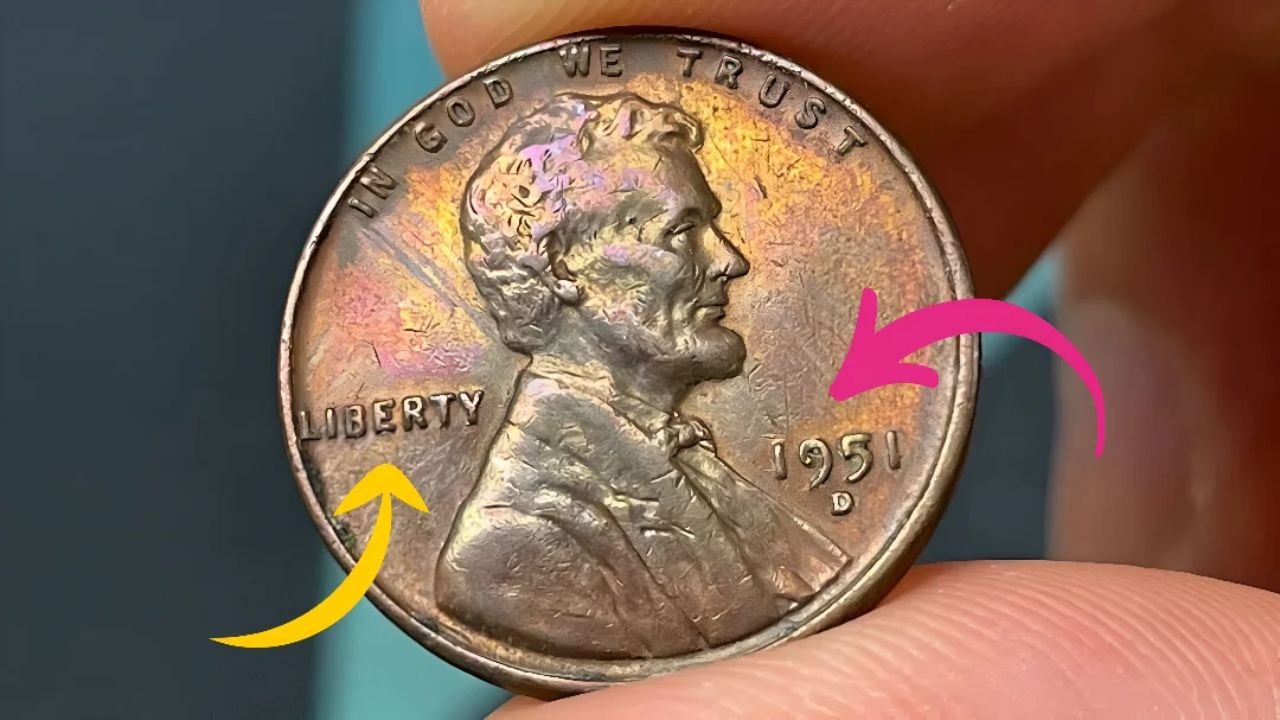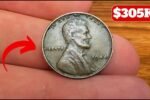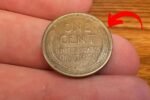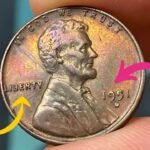The Lincoln Wheat Penny Valued at $10 Million, Still in Circulation, Can a simple penny really be worth $10 million? It might sound unbelievable, but the world of rare coins is full of surprises — and one coin stands above the rest: the Lincoln Wheat Penny. It’s not just any ordinary cent. This small copper coin, often overlooked in pocket change, has a fascinating history and has become one of the most sought-after treasures in the coin-collecting world incoln Wheat Penny.
In fact, a single rare Lincoln penny has been valued as high as $10 million, and collectors believe more could still be hidden in circulation today. So, what makes this coin so valuable? Could you unknowingly be holding one of these in your collection or even in your wallet?
Let’s dive deep into the remarkable story of the Lincoln Wheat Penny and discover what sets this coin apart — and why it’s worth more than its weight in gold.
What Is the Lincoln Wheat Penny?
The Lincoln Wheat Penny is a historic American one-cent coin that was first introduced in 1909. This was a special year — it marked the 100th anniversary of Abraham Lincoln’s birth. To commemorate the occasion, the U.S. Mint decided to honor the 16th President of the United States by featuring his portrait on the penny.
The obverse (front) side of the coin features Lincoln’s iconic profile, while the reverse (back) displays two stalks of wheat, hence the nickname “Wheat Penny.” This design remained in use until 1958, when it was replaced by the Lincoln Memorial reverse in 1959.
Over the years, billions of Lincoln Wheat Pennies were minted. Most of them are common and hold only sentimental or minor collector value. However, lincoln Wheat Penny a few extremely rare versions — often caused by minting errors — have become legendary among collectors. One such coin has even been valued at $10 million.
Why Is the $10 Million Lincoln Penny So Valuable?
So, how does a penny become so valuable that collectors would pay millions for it? The answer lies in a rare error from 1943.
During World War II, the United States was in desperate need of copper for wartime production. As a result, the U.S. Mint made a temporary change to the penny’s composition — switching from the usual copper to zinc-coated steel for that year. These new 1943 steel pennies had a shiny silver appearance, quite different from the typical copper color Americans were used to.
But somewhere in the minting process, a small batch of 1943 Lincoln Wheat Pennies was accidentally struck using the old bronze (copper-based) planchets. This rare mistake produced a few copper-colored pennies in a year when none were supposed to exist.
Only an extremely limited number of these 1943 bronze Lincoln Wheat Pennies have ever been discovered. Because of their historical significance, extreme rarity, and collector demand, these coins are considered some of the most valuable in U.S. history. One such coin, depending on condition and authenticity, has been valued at up to $10 million.
Could This Rare Lincoln Penny Still Be in Circulation?
It may sound like a long shot, but yes — it’s still possible that one of these ultra-rare Lincoln Wheat Pennies could be out there. Many of the 1943 bronze pennies were unknowingly used in daily transactions before their value was understood. Some were tossed into coin jars, hidden away in drawers, or inherited in old collections.
Every year, stories surface of valuable Lincoln pennies being discovered in ordinary places — in garage sales, Lincoln Wheat Penny coin collections, and even inside old piggy banks. That’s why collectors, hobbyists, and treasure hunters continue to check their spare change in the hopes of uncovering one of these multimillion-dollar gems.
How to Identify a Rare 1943 Bronze Lincoln Wheat Penny
If you’re hoping to discover one of these rare pennies, here are some important things to look for:
1. Check the Date
Make sure the coin is dated 1943. Most Lincoln pennies from that year were made of steel, not copper.
2. Check the Color
A regular 1943 steel penny is silver-gray. If your 1943 penny looks copper-colored, it could be bronze — and potentially very valuable.
3. Check the Weight
A genuine bronze Lincoln penny weighs about 3.11 grams, while steel pennies are lighter, around 2.7 grams. A digital scale can help you check this accurately.
4. Magnet Test
Steel pennies are magnetic. Bronze coins are not. If your 1943 penny sticks to a magnet, it’s steel. If it doesn’t, it could be bronze — worth checking further.
5. Professional Grading
If you suspect you have a rare Lincoln Wheat Penny, submit it to a certified coin grading service such as PCGS (Professional Coin Grading Service) or NGC (Numismatic Guaranty Corporation). These services can verify its authenticity and provide an official valuation.
Other Rare and Valuable Lincoln Pennies
While the 1943 bronze penny gets most of the attention, there are other Lincoln Wheat Pennies that are also highly prized:
- 1909-S VDB Lincoln Penny: The first year of the coin’s release, some pennies minted in San Francisco included the designer Victor David Brenner’s initials “V.D.B.” on the reverse. These are extremely rare and can sell for thousands of dollars.
- 1955 Doubled Die Lincoln Penny: This penny has a noticeable doubling of the date and lettering, a result of a minting error. It’s another coin that collectors are eager to own.
- 1922 “No D” Penny: Some Denver-minted coins were struck so weakly that the “D” mintmark didn’t appear. These coins are also valuable to collectors.
FAQs About the Lincoln Wheat Penny Valued at $10 Million
Q1: Is there really a Lincoln Wheat Penny worth $10 million?
Yes. A rare version of the 1943 Lincoln Wheat Penny made of bronze instead of steel is estimated to be worth up to $10 million. Only a handful exist, making it one of the most valuable coins in the world.
Q2: What makes a Lincoln Wheat Penny so valuable?
Factors that contribute to a penny’s value include minting errors, limited mintage, metal composition, and condition. A 1943 bronze penny is valuable due to its accidental creation during wartime copper shortages.
Q3: Could such a valuable coin still be in use?
It’s possible. While unlikely, some of these rare Lincoln Wheat Pennies have been discovered in circulation, coin collections, or passed down through generations.
Q4: What should I look for in my Lincoln pennies?
- 1943 bronze color
- 1909-S VDB mintmark
- Odd features like double-die errors
- Unusual weight or missing mint marks
Q5: How can I confirm if my Lincoln penny is rare?
Use a magnet, a precision scale, and compare your coin with verified images online. For a professional assessment, consult a grading service or reputable coin dealer.
Q6: Where can I sell a valuable Lincoln penny?
Also Read – New Maruti Ertiga 2025 comes with a dangerous look, see the price with smart features
If you’re lucky enough to find one, contact auction houses, coin shows, or certified numismatic marketplaces. Make sure the buyer is legitimate and get your coin professionally appraised first.
The Legacy of the Lincoln Penny: More Than Just Change
The Lincoln Wheat Penny isn’t just a collectible; it’s a piece of American history. From its tribute to President Abraham Lincoln to its wartime variations, this tiny coin has captured the imagination of millions. Its story represents how everyday objects can carry immense value — not just in dollars, but in historical significance and the thrill of discovery.
Whether you’re a seasoned collector or someone simply curious about the coins in your pocket, the next Lincoln penny you find could be far more than spare change. It could be your ticket to a small fortune — or at the very least, a connection to the rich tapestry of American numismatic history.
So next time you receive change at the store or sift through your old coin jar, take a second look. That small copper coin with Lincoln’s face might just be the most valuable thing you own.
Some Important Link
| Telegram Group | Click Here |
| WhatsApp Group | Click Here |
| Home Page | Click Here |















